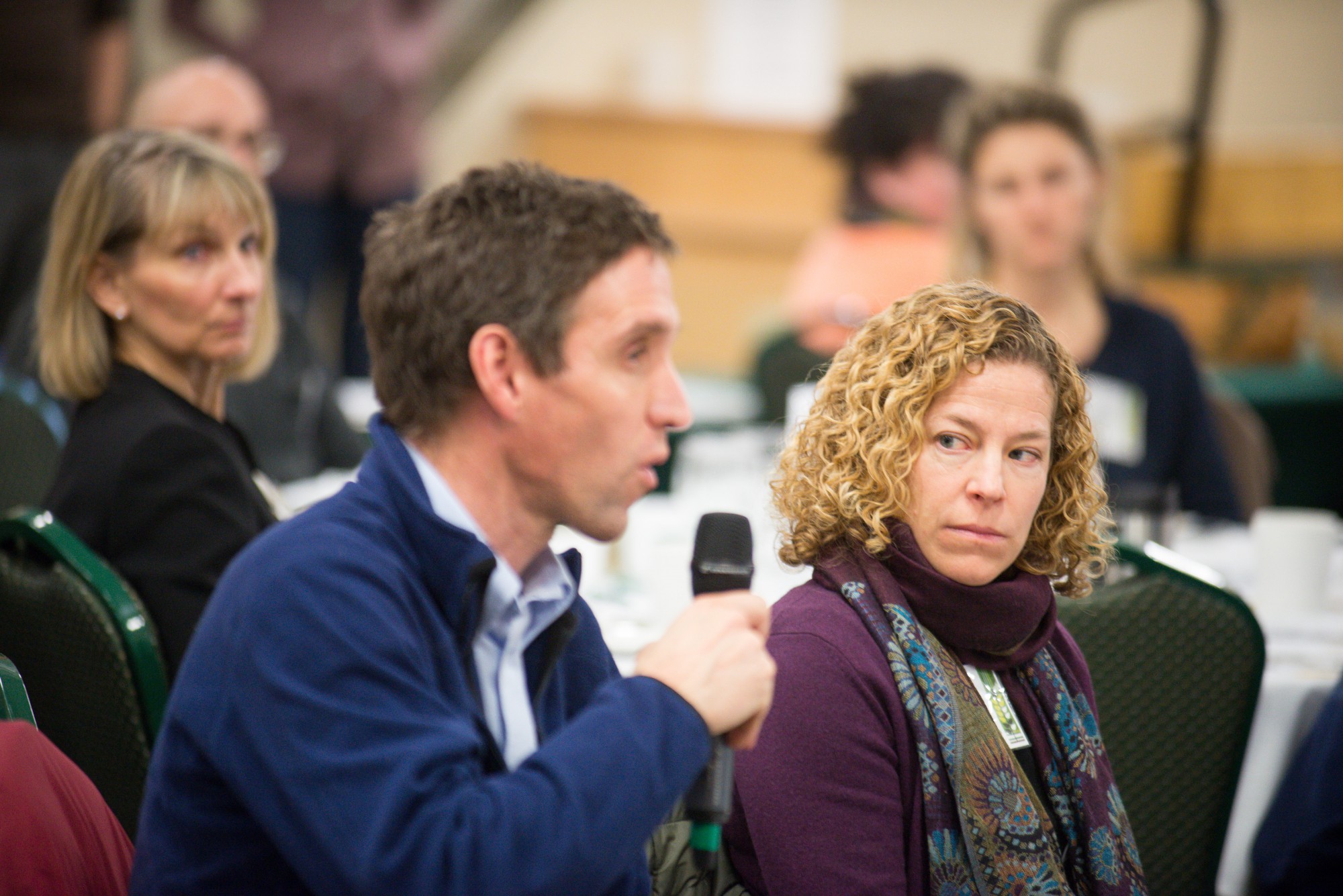Conference: Connecting Food System Education with Employers
January 22, 2013

This type of meeting is timely, given the growth of Vermont’s food system and Governor Peter Shumlin’s second inaugural address outlining his plans to improve Vermont’s public education system. In his speech Governor Shumlin said, “Our education system, from pre-kindergarten to higher education, is the state’s greatest economic development tool.” He called on “employers to engage with the educational system at all levels. Open your businesses to our schools. Let them interact with your employees, so they can see how they use their education every day.”
At the conference, Vermont Technical College President Philip Conroy provided opening remarks that also emphasized the importance of aligning the business and education. “We believe that the ‘GroundWork’ we do here can become a national model for collaboration among all stakeholders to identify the immediate and longer-term skills needed in all sectors of the agricultural workforce, to educate students accordingly, and to invigorate these active partnerships among private, public, government and education counterparts,” said Conroy.
Tippett and Meunier provided the keynote presentation, which explained the Charting a Path study, conclusions, and recommendations. Their research identified gaps between current food system education and the skills needed by today’s farm and food businesses. Tippett explained, “As a state, we’re doing a lot of things right in our food businesses and our workforce, but in some important ways we’re not maximizing the impact of that work.” She went on to say that every employer they spoke with for the study was struggling to find qualified employees, and they were looking for everything from accountability and work ethic to basic math and writing to more advanced skills.
Reactions to the keynote and Charting a Path study started several conversations during the 30 minute Q&A session following the presentation. The group discussed the seasonality of some food system jobs, and the need for identifying complimentary educational programs or careers that couple well with the growing season. One participant suggested another way to consider the findings: The data shows low-income jobs are plentiful and high-income jobs are accelerating rapidly, but the middle is disappearing. And Chuck Ross urged the group to define who “we” is when recommendations are made, such as “We need to identify career pathways.” Before Ross had to depart for another meeting, he urged the group to take ownership or assign specific responsibility to these action items, and to follow through on these ideas. “We have to work together. It’s a challenge, but that’s why VT can do it.”
The Charting a Path report gives 10 recommendations, such as developing clear pathways to food system careers from grades 7 and 8 through to post-secondary courses and degrees. Other recommendations include providing regular opportunities for educators and administrators to collaborate on food system curriculum, and to improve the role of guidance counselors in helping students identify and pursue food system careers.
An overarching theme from the conversations at the conference was to bring businesses into the conversation. Chuck Ross commented to the group during the keynote Q&A session, “This isn’t going to happen unless the people in the industry step up.” As one attendee put it during a small group discussion, “[Business owners] can’t complain about the lack of qualified workers, but then not invest in the educational system that produces their workers. We need [businesses] at the table.”
The room was filled with creative ideas, which were collected in a series of small group discussions, like ensuring a continuum in career advising that starts with parents and includes early educators and career and guidance counselors. Or, for example, learning more about the “rock stars” of Vermont’s food system – the well-known cheese makers, dairy farmers, vegetable growers, or brewers: Who are they, but more importantly, how did they get where they are? A common sentiment throughout the conversation was the importance of listening to the students to learn their specific needs.
After the conference wrapped up and participants went on their way, the conference organizers (all members of the Education and Workforce Developing Working Group of the Farm to Plate Network) stayed on to collect and synthesize the best action ideas they heard from attendees. They grouped these action steps into four broad calls for movement: Connect classroom, career and community; inspire and support educational innovation; identify sustainable leadership; and expand community-based training opportunities. Under each heading are one to four specific examples of the type of action needed to meet these broader objectives:
Connect Classroom, Career, and Community
- Expose students to career options
- Develop and coordinate career pathways
- Build relationships (educators, employers, students, workers, community, guidance counselors)
- Expand guidance to a broader depth, and embrace the food sector with positive influence
- Help students visualize career options with hands-on interaction and learning between students, educators, and employers
Inspire and Support Educational Innovation
- Allow for more innovation at technical education centers
- Strengthen math and science preparation and application
- Change k-12 school priorities so they have time and support to implement work readiness programs that already exist
Identify Sustainable Leadership
- Look for leadership beyond the Vermont Sustainable Jobs Funds and Farm To Plate
Expand Community-Based Training Opportunities
- Provide human resources training for management staff
- Offer community-based skills certification as a more affordable option than college, using community resources to supply the place for learning
The event was hosted by the Institute for Applied Agriculture and Food Systems at Vermont Technical College and co-sponsored by the Farm to Plate Network, the Vermont Sustainable Jobs Fund, the VT Department of Labor, and the VT Agencies of Education, Agriculture, Food & Markets and Commerce & Community Development. This conference was made possible by support from the Vermont Agency of Education, the Vermont Agriculture Innovation Center, and Vermont Technical College.




